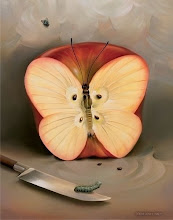How many stitches does a modern sewing machine have? For the first hundred years, the sewing machines only had straight stitches. Today, sewing machines are very different. Today there are whole sets of stitches including, decorative stitches, alphabetic lettering, utility stitches, and over casting stitches. Today sewing machines boast twenty to a thousand different stitches. Most machines enable variations of length and width.
There are several distinctly different types of sewing machines and each type uses slightly different systems to select and form stitches.
The least expensive modern sewing machine is described as a mechanical sewing machine. These machines depend on an AC electric motor to drive shafts, gears, levers, and belts. Across the top, a series of mechanical devices the needlebar. Across the bottom, another shaft drives the hook and feed systems.
Mechanical implies levers and gears working together. When you examine the insides of a mechanical sewing machine, you see a large gear with strange ridges and valleys around it. Then you see levers that rub against or run along the edge of this large gear. This motion conveys this motion to the needle bar enabling the bar to create a variety of stitches.
Cam tracker alignment are adjusted by surface mounted dials, buttons, or levers. The position of the cam tracker lever determines the stitch produced. The position of the stitch selector lines up the tracker to form the selected stitch. If it gets out of line, it will fail to produce the desired stitch. To fix this, adjust the stitch selector connection on the cam tracker and align it with the proper groove on the cam gear. Also look closely to make sure the cam gear has not cracked or broken.
Sewing machines that use electronic controls and switches is called an electronic sewing machine. There is a wide range of machines in this category. Some use only limited electronics and depend largely on traditional mechanical systems. Others use electronic parts aggressively and may even include computer chip controls.
Electronic sewing machines significantly improve the smoothness, dependability, and ease of sewing machine use. Many more stitches are offered by electronic stitches.
The modern sewing machine like most other modern devices has been transformed by computerized technologies. The pre-programmed stitches and capabilities of the computerized sewing machine produces amazing results. It sews smoother. It sews easier. It sews with far greater potential. The computerized machine uses quiet DC pulse motors, stitch selection, and loads of convenience features.
To choose a stitch on a mechanical sewing machine turn a dial, move a lever, or press a button.
A button is used on an electronic sewing machine or stitch selection.
Touch the touch screen. Press a button on a keypad. Or, touch the button to choose stitches on a computerized sewing machine.
Learn to take advantage of all the features your sewing machine offers. Make your own stitch book for easy reference. Make sets of 5 by 7 pieces of fabric. Sew one seam across the top of the piece about an inch down. Drop down another inch and sew a new seam using a different stitch. Continue down the piece until the piece is complete. Start another piece and continue sewing all the different stitches of until you have a sample of every stitch on your sewing machine. Finally, seam the collection of pieces together into your own stitch book.
Grasp the full potential of your sewing machine. Learn every stitch on your machine. Master the selection, settings, and use of each stitch. Then you will have real confidence sewing with your sewing machine.
A Great Way To Business Credit:
16 years ago





No comments:
Post a Comment